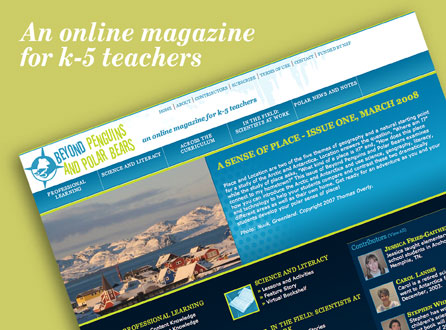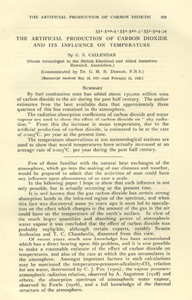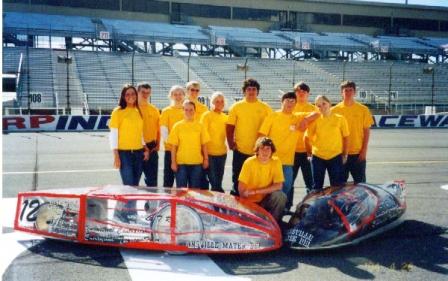Monday, March 3rd, 2008 4:31 pm
Contributed by: Carol Minton Morris
Columbus, Ohio-March 3, 2008 Blockbuster movies and even soft drink commercials have made our planet’s polar regions and their inhabitants popular culture superstars. At the same time many people have either been confronted with what they believe to be climate change weather events, or find themselves wondering about how melting polar ice sheets and rising ocean temperatures might affect their lives in the future. Despite this onslaught of data, scientific discovery, drama and speculation, misconceptions about the polar regions and their importance abound.
Blockbuster movies and even soft drink commercials have made our planet’s polar regions and their inhabitants popular culture superstars. At the same time many people have either been confronted with what they believe to be climate change weather events, or find themselves wondering about how melting polar ice sheets and rising ocean temperatures might affect their lives in the future. Despite this onslaught of data, scientific discovery, drama and speculation, misconceptions about the polar regions and their importance abound.

As attention continues to turn to polar environments a coalition of specialists from science, literacy and educational organizations nationwide is pleased to announce the launch of Beyond Penguins and Polar Bears , an online professional development magazine for elementary teachers. This issue features content-rich web sites, interactive videos, animations, articles written specifically for K-2 and 3-5 students that are available in text-only versions as well as in printable, foldable book versions, photographs that highlight polar beauty and mystery, and even a poetry lesson plan that features work contributed by elementary school students in Anchorage, Alaska. The magazine focuses on developing teacher content knowledge about the Arctic and Antarctica and enabling teaching of polar science concepts in already-crowded curricula. By integrating inquiry-based science with literacy teaching, developers aim to increase students’ science knowledge, academic language, reading comprehension, and written and oral discourse abilities.
, an online professional development magazine for elementary teachers. This issue features content-rich web sites, interactive videos, animations, articles written specifically for K-2 and 3-5 students that are available in text-only versions as well as in printable, foldable book versions, photographs that highlight polar beauty and mystery, and even a poetry lesson plan that features work contributed by elementary school students in Anchorage, Alaska. The magazine focuses on developing teacher content knowledge about the Arctic and Antarctica and enabling teaching of polar science concepts in already-crowded curricula. By integrating inquiry-based science with literacy teaching, developers aim to increase students’ science knowledge, academic language, reading comprehension, and written and oral discourse abilities.
Jessica Fries-Gaither, elementary resource specialist and project director for Beyond Penguins and Polar Bears notes, “As a former elementary teacher in Alaska, I understand the difficulty of finding time for quality science instruction. Yet in the face of issues such as global climate change and dramatically changing polar regions, it is essential that science, specifically polar science, is included. We are particularly pleased to offer this new online magazine that transfers current polar research and best practices in science and literacy instruction to classrooms nationwide.”
notes, “As a former elementary teacher in Alaska, I understand the difficulty of finding time for quality science instruction. Yet in the face of issues such as global climate change and dramatically changing polar regions, it is essential that science, specifically polar science, is included. We are particularly pleased to offer this new online magazine that transfers current polar research and best practices in science and literacy instruction to classrooms nationwide.”
Science instruction in the elementary years has historically been limited or even omitted entirely. However, No Child Left Behind-mandated testing in science increases pressure on schools and teachers to devote time to quality science instruction. The intersection of mandated science testing, International Polar Year research and outreach initiatives, and a growing awareness of worldwide climate change make Beyond Penguins and Polar Bears a timely and relevant undertaking.
a timely and relevant undertaking.
Twenty thematic issues of the online magazine will include standards-based science and content-rich literacy learning across five departments (In the Field: Scientists at Work, Professional Learning, Science and Literacy, Across the Curriculum, and Polar News and Notes). Engaging science activities, compelling images, rich text, and multimedia resources such as podcasts and videos and even a browseable Virtual Bookshelf that includes quality children’s literature for classroom use are designed to capture the interest of both teachers and students. Strategies for integrating technology, addressing misconceptions, and ensuring equity in the classroom are topics of emphasis.
In a time of observable and measurable climate change, it is vitally important to understand the science of the polar regions. Beyond Penguins and Polar Bears helps teachers go beyond a superficial understanding and foster deep, meaningful scientific understanding at a critical time-both in their students’ development and for the planet’s well being.
helps teachers go beyond a superficial understanding and foster deep, meaningful scientific understanding at a critical time-both in their students’ development and for the planet’s well being.
Beyond Penguins and Polar Bears is funded by the National Science Foundation Research on Learning in Formal and Informal Settings (DRL). Kimberly Lightle, Principal Investigator for the NSDL Middle School Portal developed by The Ohio State University College of Education and Human Ecology and also Principal Investigator for the Beyond Penguins and Polar Bears
is funded by the National Science Foundation Research on Learning in Formal and Informal Settings (DRL). Kimberly Lightle, Principal Investigator for the NSDL Middle School Portal developed by The Ohio State University College of Education and Human Ecology and also Principal Investigator for the Beyond Penguins and Polar Bears magazine coordinates a team of collaborators including an interdisciplinary team from Ohio State University College of Education and Human Ecology; the Ohio Resource Center for Mathematics, Science, and Reading; the Byrd Polar Research Center; The Columbus Center for Science and Industry; the Upper Arlington Public Library; and the National Science Digital Library (NSDL). Content and education specialists are creating content as well as adapting and contextualizing existing content from NSDL. NSDL is also adapting Fedora-based tools to facilitate editorial workflow, dissemination, and promotion of the magazine. The Evaluation and Assessment Center at Miami University in Oxford, OH is conducting ongoing project evaluation including teacher focus groups and usability testing that will inform iterative design going forward.
magazine coordinates a team of collaborators including an interdisciplinary team from Ohio State University College of Education and Human Ecology; the Ohio Resource Center for Mathematics, Science, and Reading; the Byrd Polar Research Center; The Columbus Center for Science and Industry; the Upper Arlington Public Library; and the National Science Digital Library (NSDL). Content and education specialists are creating content as well as adapting and contextualizing existing content from NSDL. NSDL is also adapting Fedora-based tools to facilitate editorial workflow, dissemination, and promotion of the magazine. The Evaluation and Assessment Center at Miami University in Oxford, OH is conducting ongoing project evaluation including teacher focus groups and usability testing that will inform iterative design going forward.
For more information please visit Beyond Penguins and Polar Bears or contact Dr. Kimberly Lightle (lightle.16@osu.edu), 614-688-3485.
 that integrates seminal works of scientific inquiry into a dynamic learning space for teachers and learners. In the first CAC feature, science historian James Fleming introduces 21 papers on climate change and anthropogenic (human-caused) greenhouse warming, from an 1824 essay by Fourier to a 1995 paper in the journal Climate Dynamics. Fleming’s essay and links to the complete text of the papers gives teachers resources they can use to portray science as a process that builds on discovery.
that integrates seminal works of scientific inquiry into a dynamic learning space for teachers and learners. In the first CAC feature, science historian James Fleming introduces 21 papers on climate change and anthropogenic (human-caused) greenhouse warming, from an 1824 essay by Fourier to a 1995 paper in the journal Climate Dynamics. Fleming’s essay and links to the complete text of the papers gives teachers resources they can use to portray science as a process that builds on discovery. Each CAC feature will provide an accessible overview of a topic, showing how the selected papers influenced subsequent work and built toward scientists’ current shared understanding of the topic. The feature will include links to related NSDL teaching resources, as well as bibliographies of contemporary articles that cite the classic papers. “The idea here is to work with academic publishers to create a free showcase for what they publish,” says Michael Luby of NSDL Core Integration, who is building the site. He is working on other CAC features in the subjects of chemistry (the development and discovery of plastics) and physics (giant magnetoresistance). Luby is also developing “Timely Teaching,” a feature that will give publishers a place to share full-text contemporary journal articles on hot scientific topics for free use in classrooms.
Each CAC feature will provide an accessible overview of a topic, showing how the selected papers influenced subsequent work and built toward scientists’ current shared understanding of the topic. The feature will include links to related NSDL teaching resources, as well as bibliographies of contemporary articles that cite the classic papers. “The idea here is to work with academic publishers to create a free showcase for what they publish,” says Michael Luby of NSDL Core Integration, who is building the site. He is working on other CAC features in the subjects of chemistry (the development and discovery of plastics) and physics (giant magnetoresistance). Luby is also developing “Timely Teaching,” a feature that will give publishers a place to share full-text contemporary journal articles on hot scientific topics for free use in classrooms.
 The
The 



 Last year’s Indiana’s Supermileage winner, Mater Dei High School from Evansville, also won the high school division of a competition sponsored by the
Last year’s Indiana’s Supermileage winner, Mater Dei High School from Evansville, also won the high school division of a competition sponsored by the  The Assessment Toolkit takes popular Interactivate activities and adds features that let the user keep track of correct responses. Some of the activities also allow users to select difficulty levels, choose specific problem types, and set a time limit. This allows users to tailor the assessment to their abilities. The Connect Four type games are designed for two players; other activities are designed for individual work. For example, the activity “Shape Builder” (shown here) encourages users to explore relationships between area and perimeter.
The Assessment Toolkit takes popular Interactivate activities and adds features that let the user keep track of correct responses. Some of the activities also allow users to select difficulty levels, choose specific problem types, and set a time limit. This allows users to tailor the assessment to their abilities. The Connect Four type games are designed for two players; other activities are designed for individual work. For example, the activity “Shape Builder” (shown here) encourages users to explore relationships between area and perimeter.
Posted in Topics: Science
View Comment (1) »